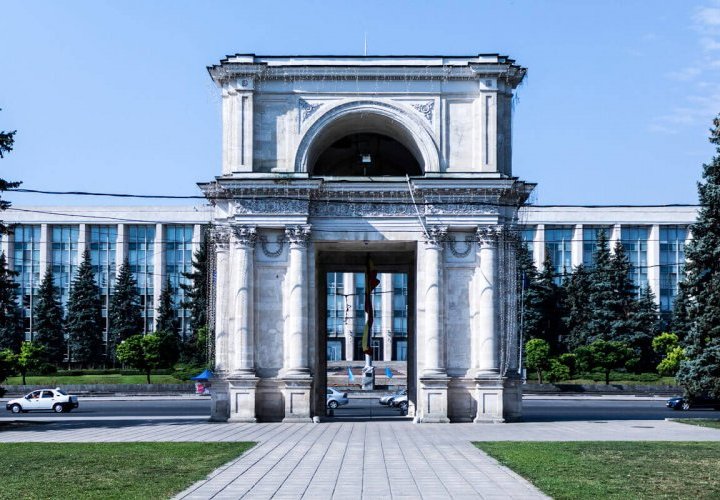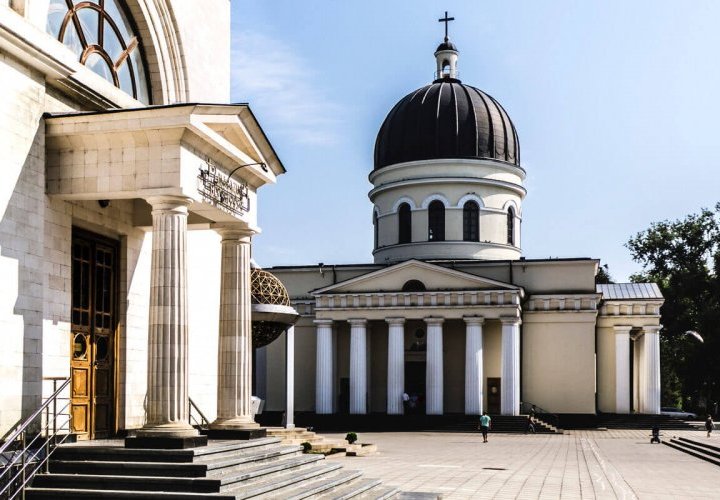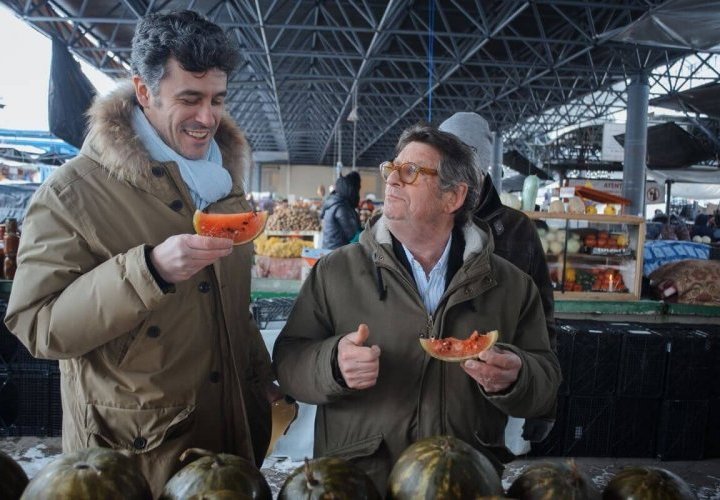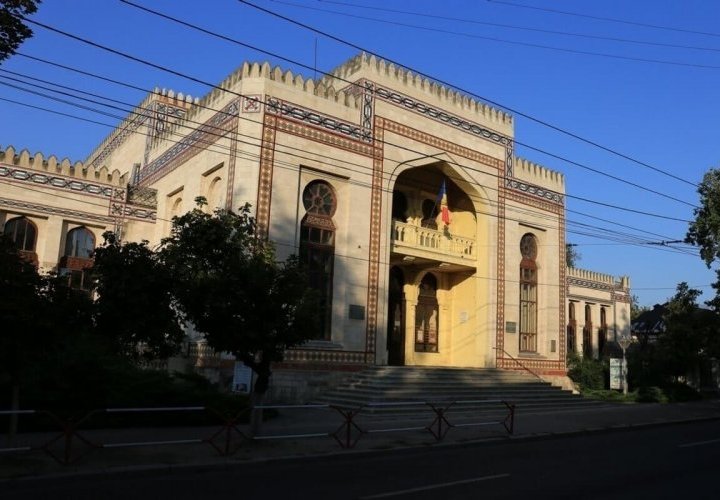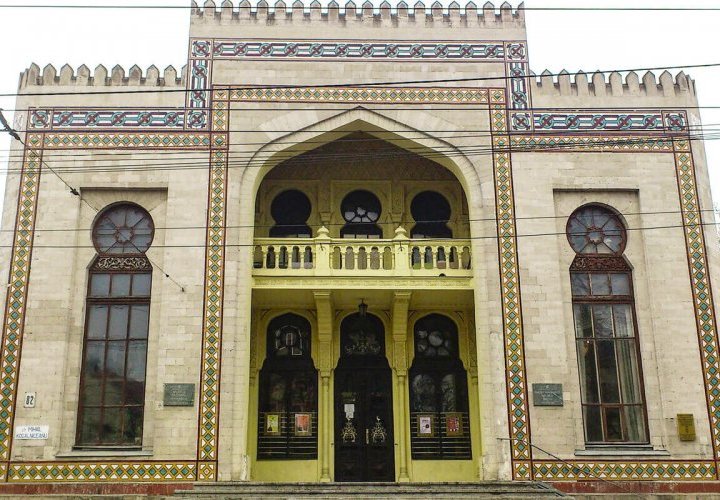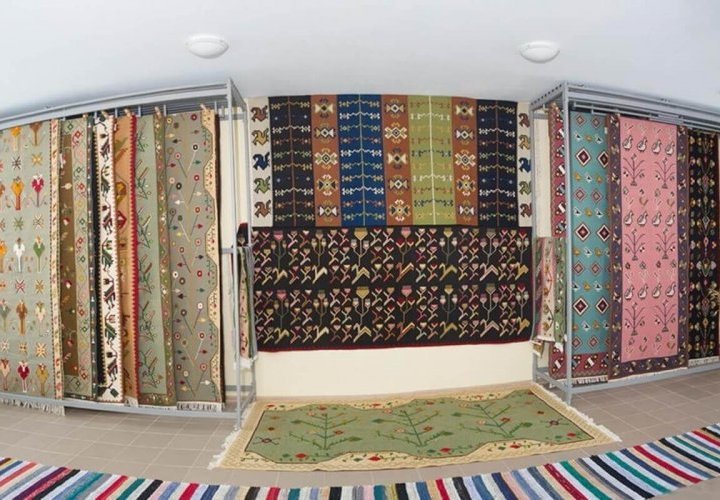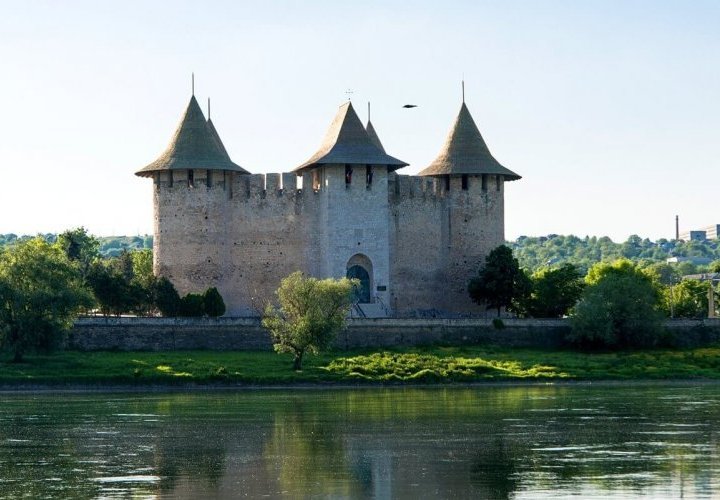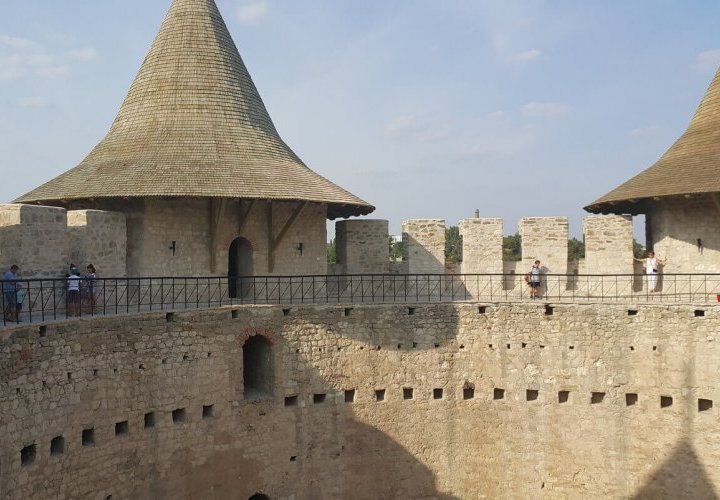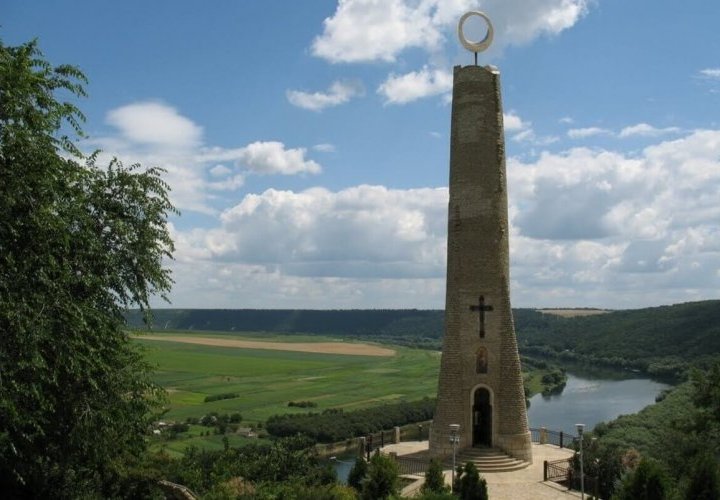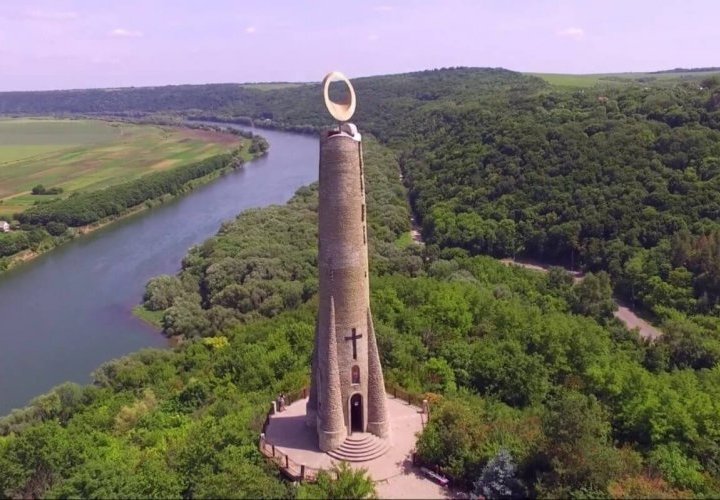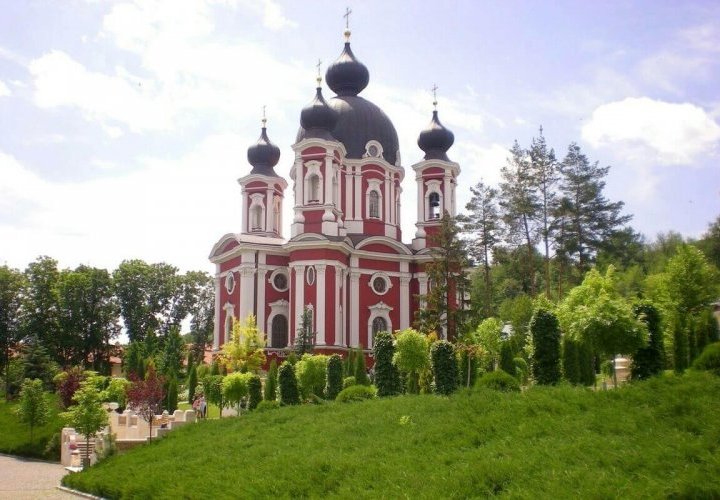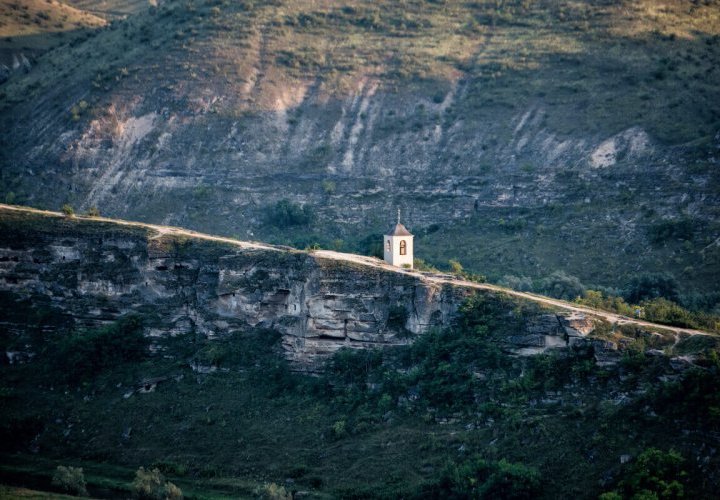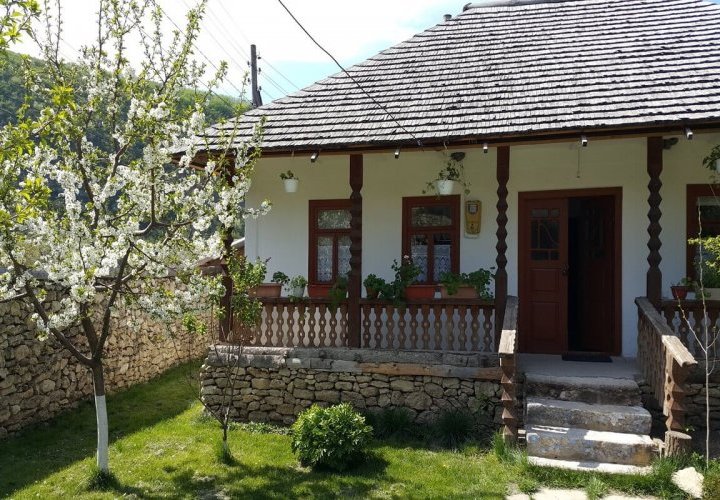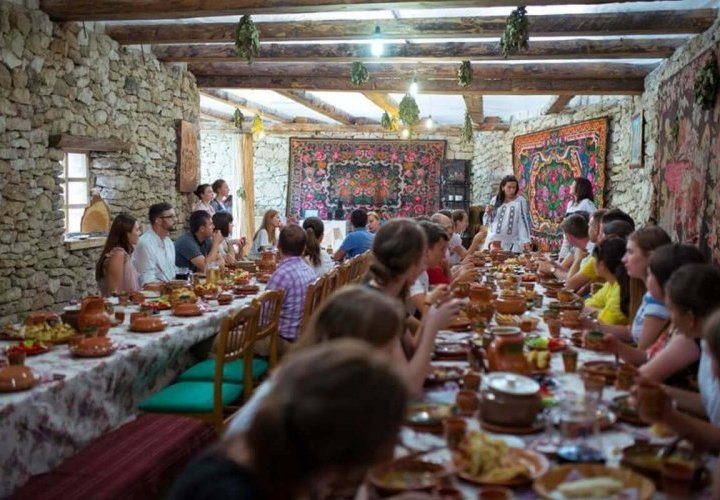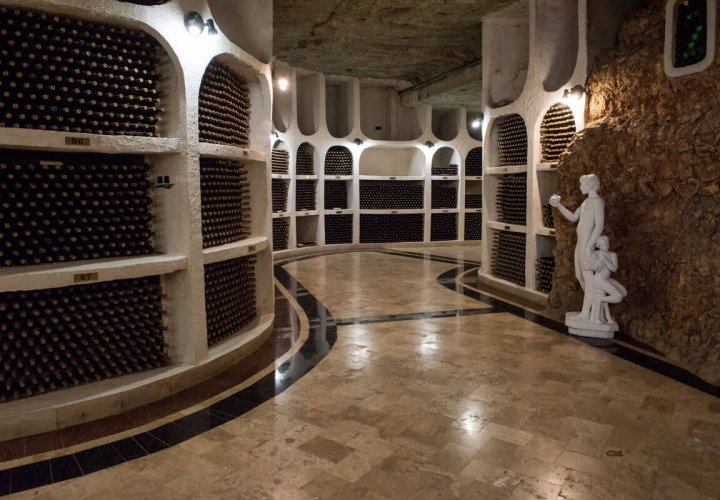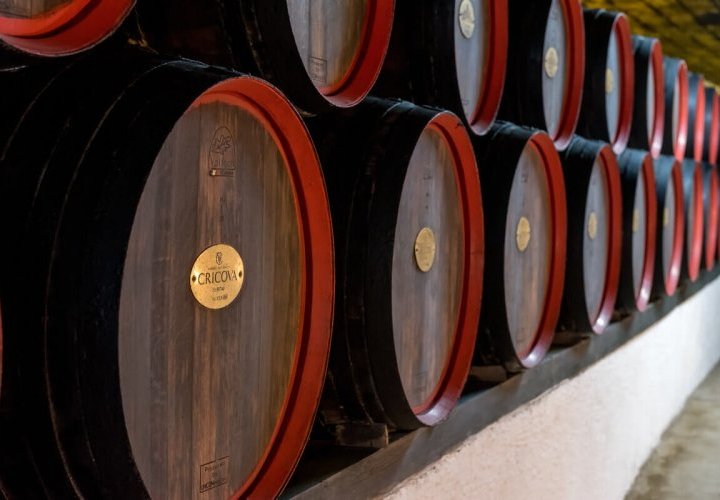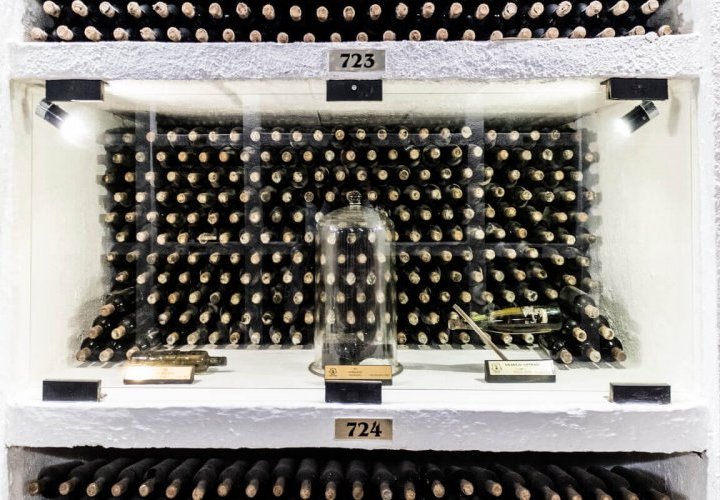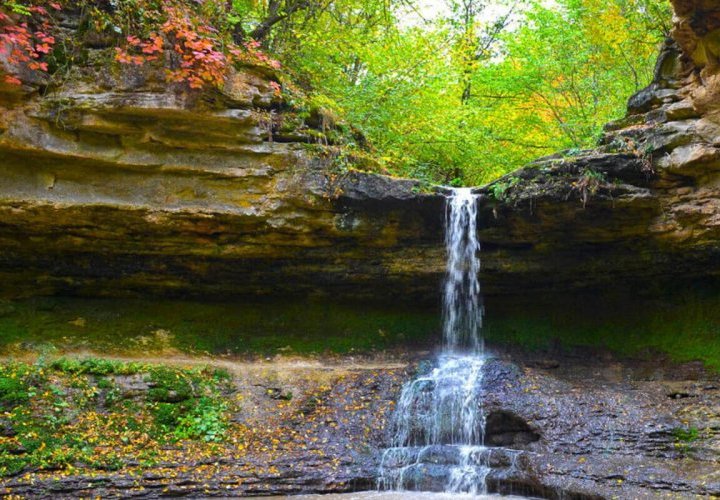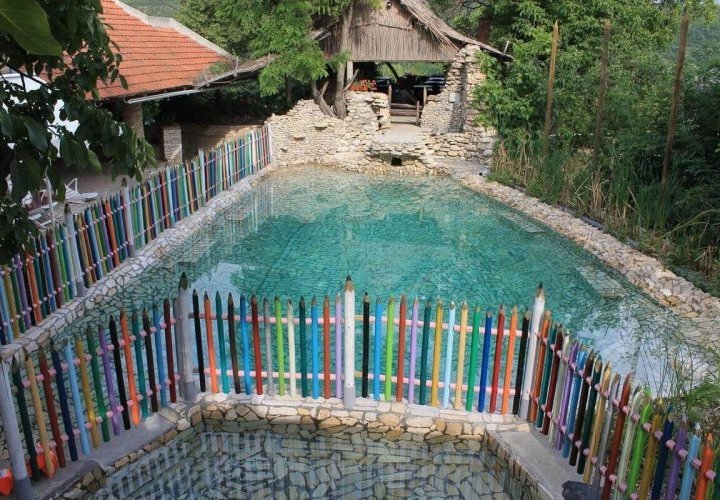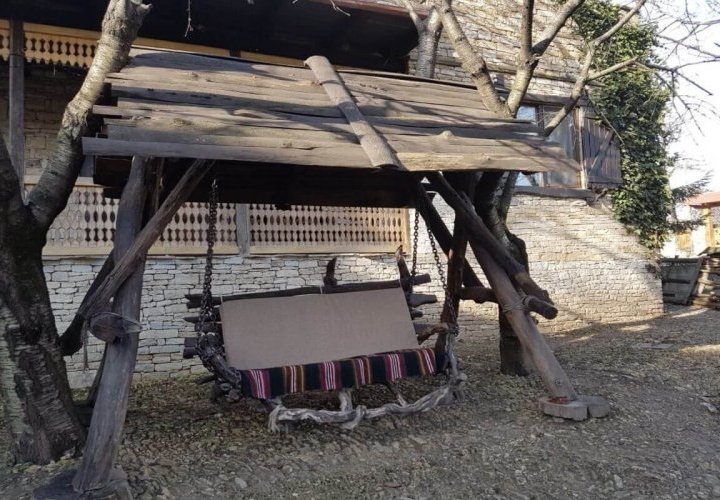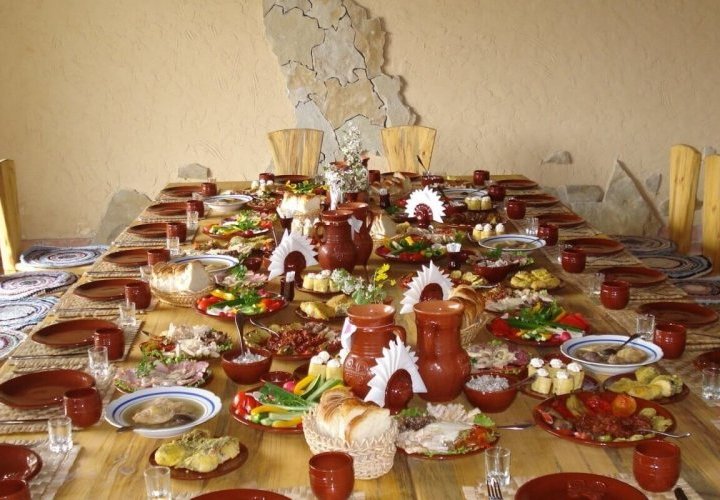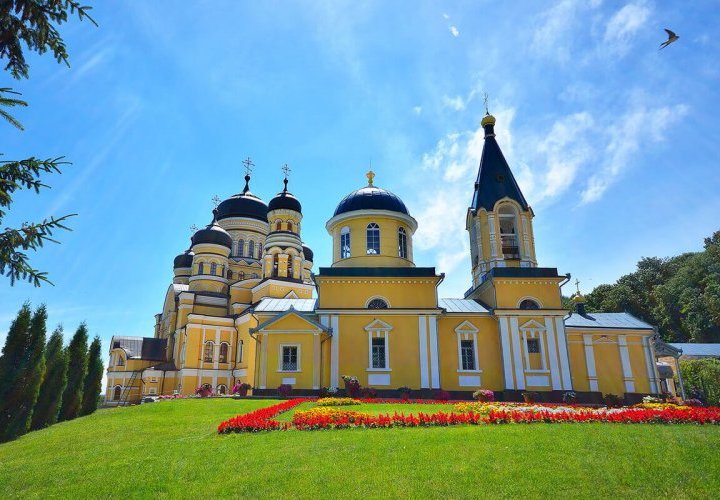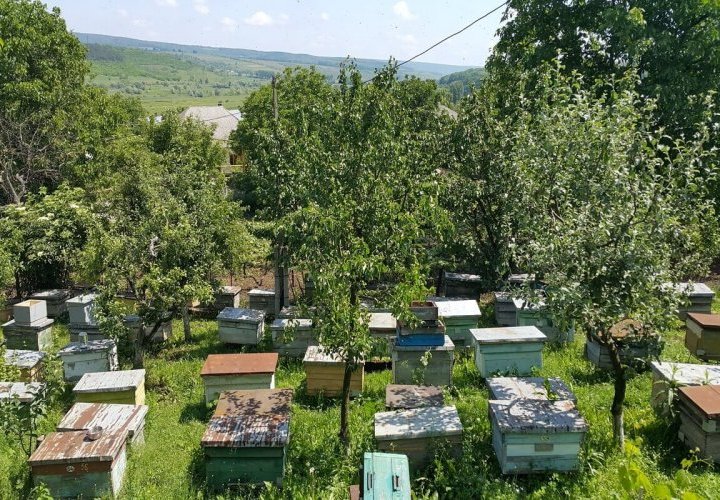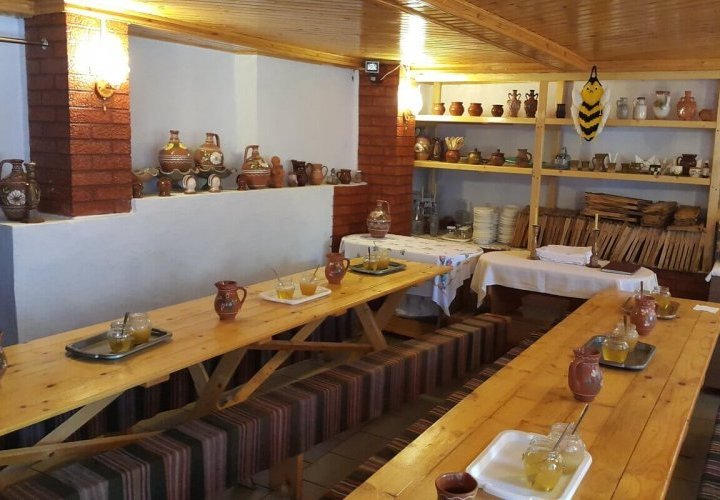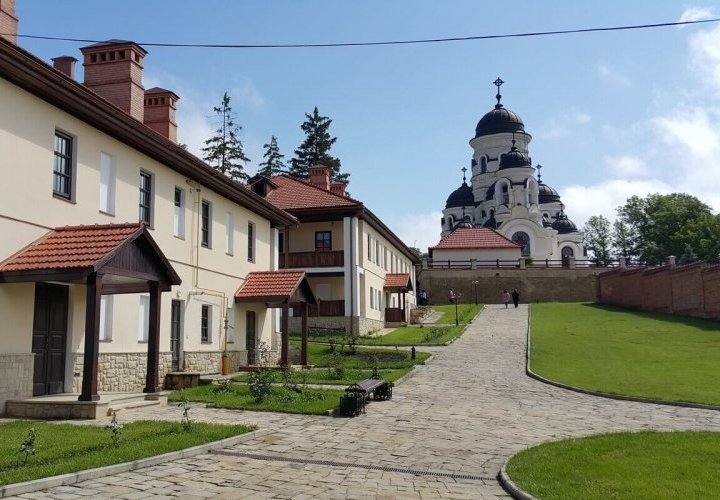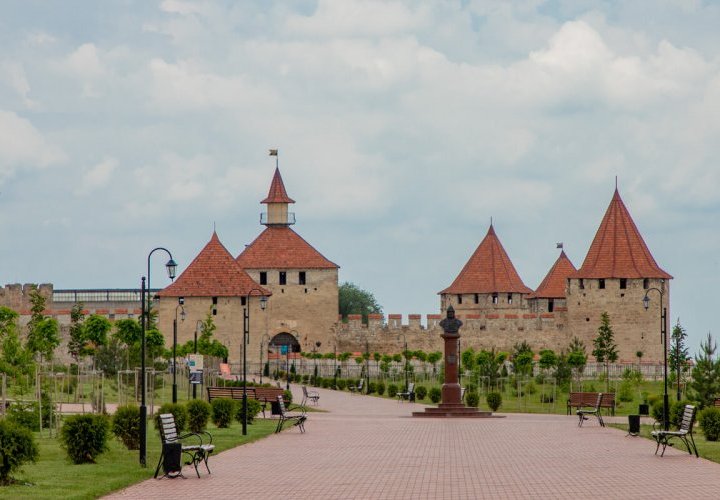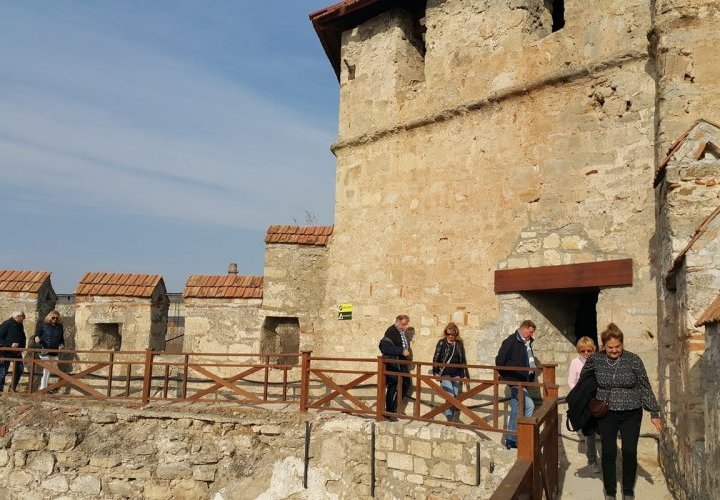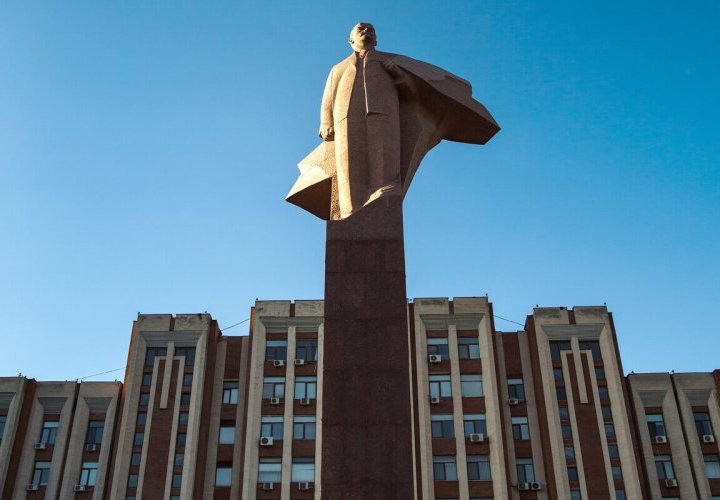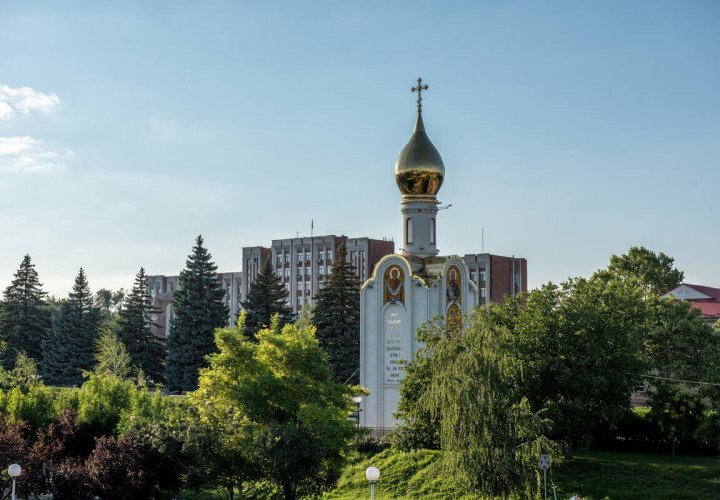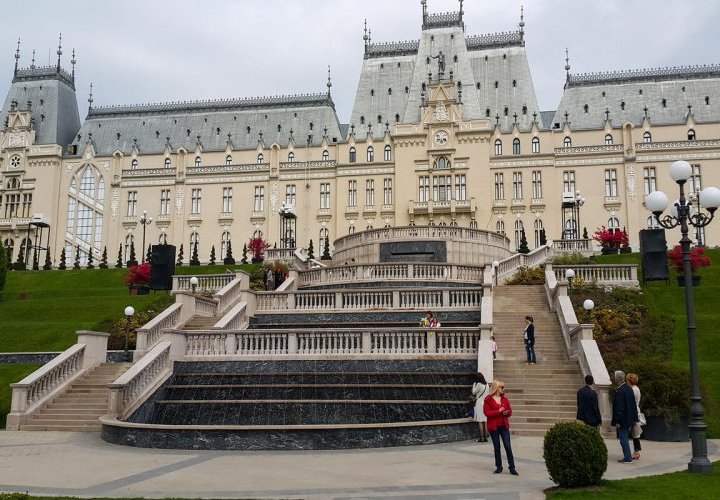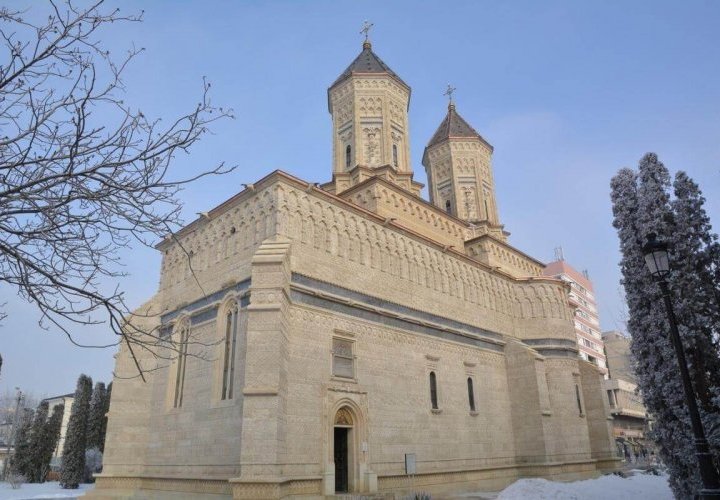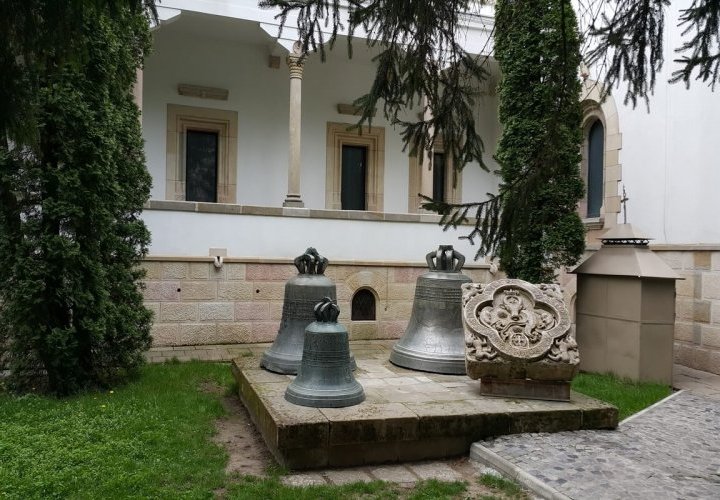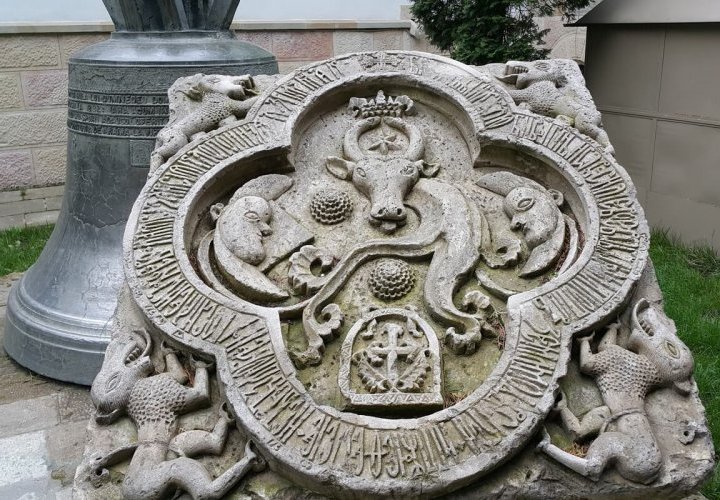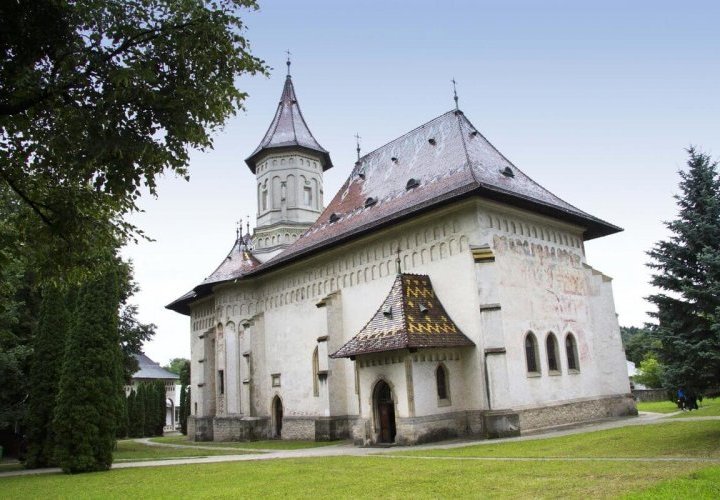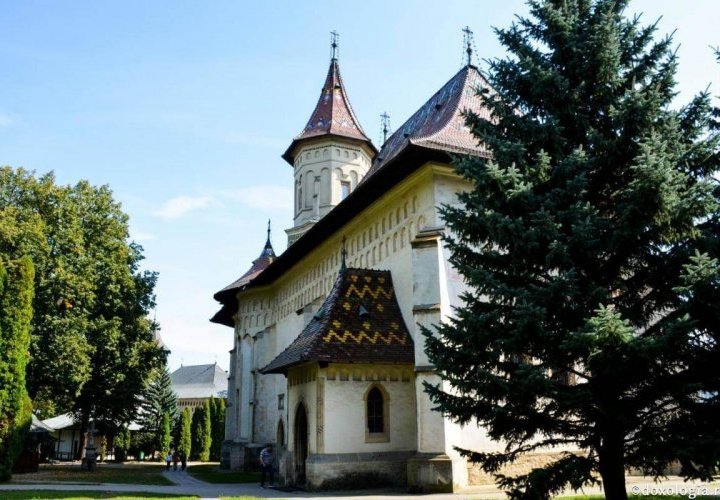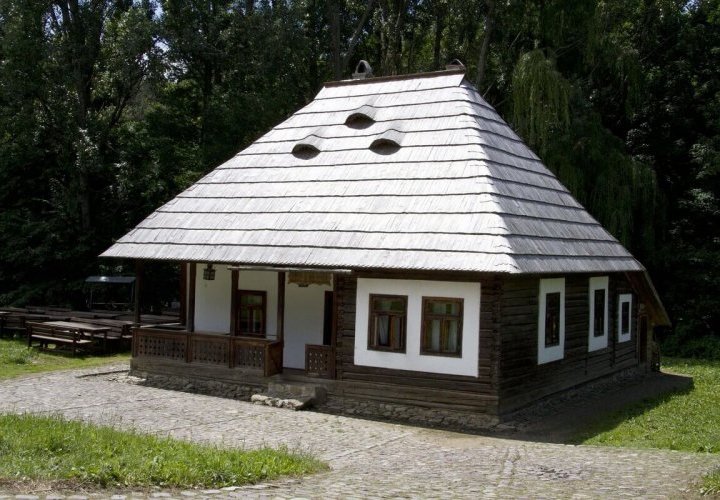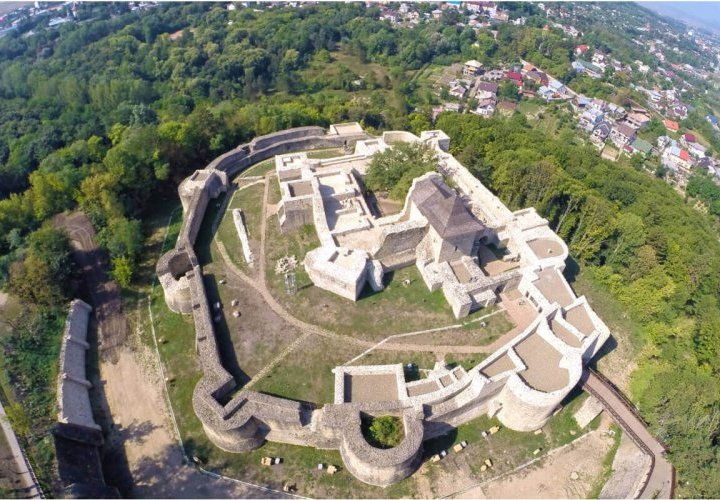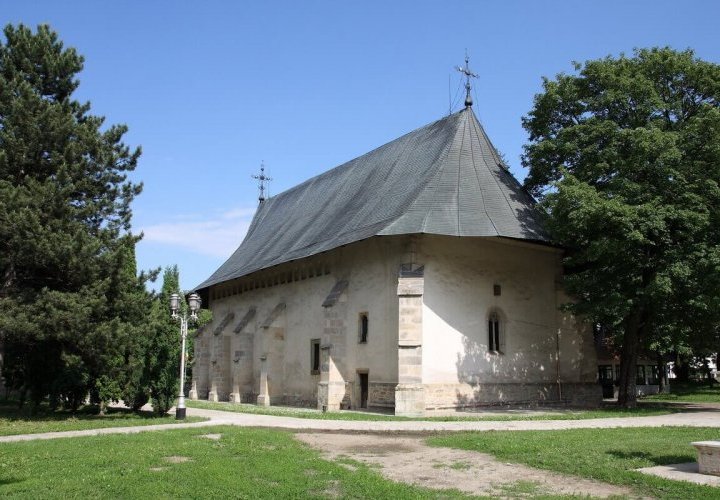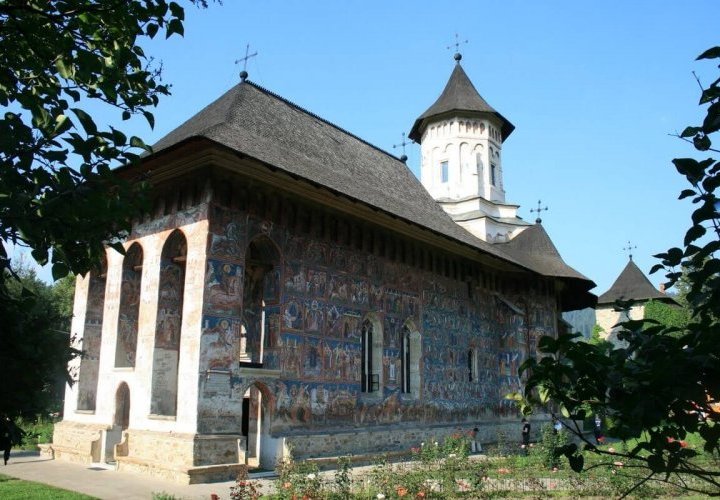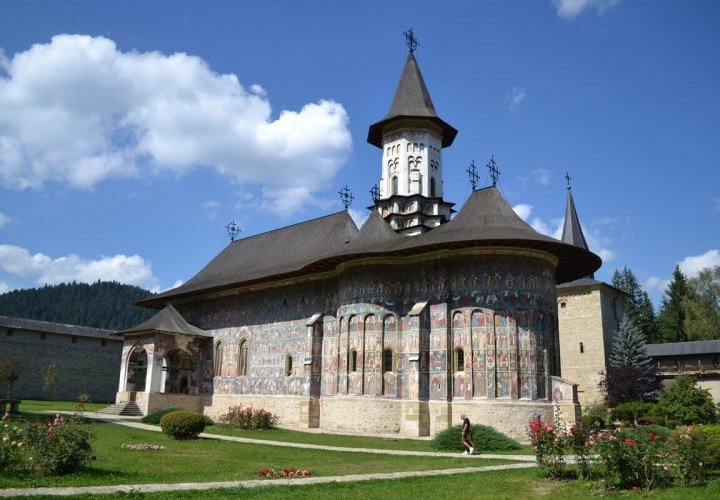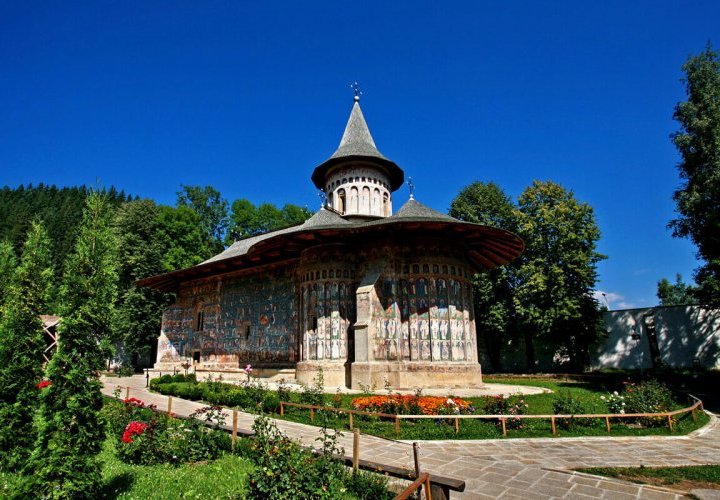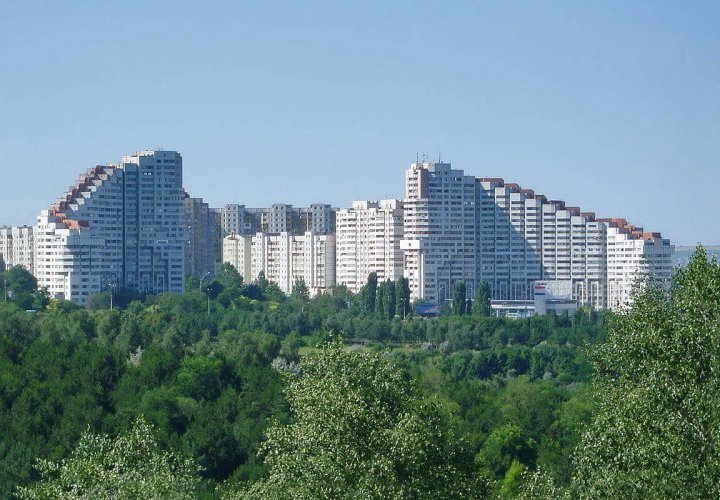Summary
Enjoy this Monasteries Tour of Moldova and Romania (Painted Monasteries of Bucovina) and discover important tourist attractions of these 2 beautiful countries. You will visit some of the most important monasteries on Moldova's territory such as Curchi, Saharna, Hincu and Capriana and 2 medieval fortresses built by Stephen the Great: Soroca and Tighina fortresses. On the territory of Romania you will discover some of the Painted Monasteries of Bucovina (in northeastern Romania) with their churches, also related to as the Churches of northern Moldova (region in Romania) by UNESCO, included in its World Heritage List. Built from the late 15th century to the late 16th century, they are among the most picturesque treasures of Romania, having external walls covered in fresco paintings. You will see Probota, Saint John the New, Sucevita, Moldovita and Voronet monasteries. In Romania, you will also visit Iasi city, Bucovina Village Museum and the Seat Fortress of Suceava.
Individual travel request form Enjoy a private tour Group travel request form Join a group tourAlina
Local travel expert in Moldova
I am a representative of a local tour operator in Moldova that has over 10 years experience in the organization of travel. I mainly specialize in wine, gastronomic and cultural tours around Moldova.
Itinerary
You will begin the day by visiting Chisinau, which is the main administrative, scientific and cultural centre of Moldova. During the city tour, you will discover pieces of history and culture of the city such as the Nativity of Christ Cathedral, the Bell Tower, the Arch of Triumph, the Monument of Stephen the Great, etc.
After the city tour, you will visit the Central Market where you will have the possibility to taste the pickles and enjoy shopping local food products such as honey, walnuts, cheese, dried fruits, etc.
You will have lunch on your own.
After lunch, you will enjoy an excursion at the National Museum of Ethnography and Natural History built in 1905 in the oriental style, thus being a unique building of this kind in Moldova. Here, you will discover famous archaeological treasures, carpets, national costumes and other valuable exhibits and you will be able to see more the “millenary smile” of the nicest deinotherium of Moldova.
The day will begin with the visit of Arta Rustica Handicraft Complex in Clisova Noua village. The handmade carpets in Clisova Noua are of amazing interest and beauty. The traditional Moldovan carpets have been included in UNESCO’s intangible cultural heritage. The creation of only one canvas takes several months. Every carpet is a work of art. The craftsmen of Clisova Noua village put their whole soul and free time into their craft. They restore unique carpets according to old photographs. They use only natural materials and authentic technique during the weaving process.
In the afternoon, you will travel to Soroca town where you will have lunch on your own.
After lunch, you will visit Soroca fortress, the “pearl of fortification art” built by the Moldovan Prince Stephen the Great in 1499. It was a unique historical monument of defensive constructions architecture of medieval more Moldova composed of a huge tower holding five smaller towers surrounding it. Currently, it is an important attraction in Soroca, having preserved cultures and kept the old Soroca in the present day.
Next, you will visit the Candle of Gratitude monument, erected on a steep cliff on the bank of the Dniester River. The visitors who get here will be rewarded with picturesque and unforgettable views after climbing 600 steps that start at the Dniester River. The inscription before the way up is as follows: “Traveler, stop! There is a Candle of Gratitude on top. And if you consider thankful to someone in this life – get up, pray and continue your way!”
The first stop of this day will be at Curchi Monastery. The monastery is surrounded by a high wall of stone, set with towers at each corner, creating the impression of a fortress. The Nativity of Virgin Mary Church built in 1775 by Iordache Curchi is an example of neo-byzantine style, while St. Nicholas Church has monumental forms built in classicism style with baroque elements.
Next, you will set off on a time travel to Orheiul Vechi (Old Orhei) to see a natural amphitheater revealing a territory which was first inhabited 40 000 years ago. The Cultural, Natural and Landscape Reserve Orheiul Vechi includes a series of historical and cultural monuments as well as natural landscapes in the gorge of the Raut River. Ancient fortifications, cave monasteries, monks and hermits – here you can follow the history of this region. The remnants of the first human settlements were found in the stone more caverns from here. On the rocky hill, you will find the ruins of a strong Geto-Dacian fortification, which acted as a sanctuary for celebrating religious holidays and rituals in this prehistoric community. The originality of Orheiul Vechi landscape is due to the gorge of the Raut River, dug under the form of a canyon in the limestone layers of the former Sarmatian Sea, about 14 million years ago.
You will have lunch at Butuceni guesthouse where you will taste dishes from the local cuisine.
You will continue your trip by exploring a new city, this time an underground city. During the excursion at Cricova winery in the tourist train, at a depth of 80 m, you will discover the wonders of this place. Cricova underground galleries are formed by over seventy streets covering an area of nearly 120 km, each bearing Bacchic names: Sauvignon, Cabernet, Cahors. The jewel of the underground treasure is the National Collection, including over 600 types of wine totaling about 1 million bottles. Here you can admire the oldest bottle of wine – “Jewish Easter Wine”, dating from 1902 and discover the tastes of Cricova wines.
In the morning, you will visit Saharna Monastery - one of the oldest monasteries in the country. The monastic complex is composed of a cave monastery (the Annunciation) and a stone monastery (the St. Trinity). The complex is located in a picturesque valley on the right bank of the Dniester River, near Saharna village. It is surrounded by rocks covered by forest. The legend says that the Virgin Mary left her footprint on the highest rock, named Grimidon. The history of the monastery is little known. The first prior of the holy place is considered the monk Bartholomew (1776-1790) who settled in a deep gorge, built a church, a few cells and enclosed the monastery with a stone wall. In Saharna there is a beautiful landscape created by the waterfalls. The River Saharna has 22 waterfalls on its way. The biggest waterfall is 4.5 m high.
Then, you will travel to Lalova village where you will have lunch more at Hanul lui Hanganu guesthouse. The guesthouse is the perfect choice for a quiet and full of emotions stay. Here, you will surely fall in love with some of the most popular dishes in Moldova, passed down from generation to generation.
Today, you will visit Hincu Monastery, a monastery of nuns founded by the boyar Mihalcea Hincu in 1678 in order to fulfill the request of his daughter who decided to dedicate herself to the monastic life. She became a nun, taking the name of Parascheva. Being closed during the period 1956-1990, the monastery reopened in 1990, at the request of the locals, soon becoming one of the most well-organized and visited monastic attractions.
Next, you will discover the “sweet” Casa Mierii (Honey House) located in Raciula village, where you will enjoy an excursion, lunch and honey tasting. Here, in a small bees’ kingdom, with a bunch of beehives in the garden, and the house transformed in a honey museum, the householder will disclose with patience all the secrets of a bee’s family. You will see a small family of bees through the glass wall of a hive and taste the natural and delicious honey more produced here.
You will continue your trip to Capriana Monastery, founded in medieval Moldova, which is one of the oldest monasteries in the country. It is located in Capriana in a picturesque forested area once called Codrii Lapusnei. The first significant reference dates from a document issued in 1429 that gave Capriana the status of royal monastery on behalf of Alexander the Good. During a long period, Capriana Monastery acted as the residence of the Moldovan archbishop. Being closed and devastated in the post-war years, it was one of the first monasteries that reopened in 1989, becoming soon the symbol of national revival.
The day will begin with the discovery Tighina Fortress located in Tighina town and built in the 15th century by the prince of Moldova, Stephen the Great. Originally built as a small wooden fort, it was later fortified in stone by the prince of Moldova, Petru Rares. Occupied by the Ottomans in 1538 (in a campaign lead by the sultan Suleiman the Magnificent), the fort was strengthened in 1541 and became the center of an Ottoman "raya" (in which were included the surrounding Moldavian villages). In the 18th century, the fort was strengthened by Moldovan craftsmen under the direct supervision of Dimitrie Cantemir. Tighina Fortress is an architectural ensemble of irregular quadrilateral plan, surrounded by wide walls, 2-3 meters thick, made of limestone and brick.
In Tiraspol, you will set off on a time travel. During the city tour, you will discover Vladimir Lenin’s monument and the tank left more from the Second World War. The city seems to be a vestige of the Soviet past. Nevertheless, you will be amazed by the contrasts, one of which is the football complex “Sheriff” - a pearl of contemporary architecture.
In the afternoon, you will have lunch in Tiraspol on your own, after which you will return to Chisinau.
In the morning, you will depart to Iasi city, named Open Air Museum or the Cultural Centre of Moldova region in Romania.
Once arrived in Iasi, you will have lunch on your own.
During the guided tour of Iasi, you will see the Palace of Culture, one of the most remarkable buildings and a true symbol of the city’s past. The Palace was built between 1906 and 1925 on the location of the former prince’s palace and is a happy blend of several architectural styles: neo-gothic, romantic and neo-baroque. The Three Holy Hierarchs Monastery is another important attraction of Iasi included in the city tour, distinguished by its unusual quality of being completely dressed in engravings and decoration elements. The walls of this church are the reason why it is among the most valuable architectural monuments of the country.
After the city tour, you will be transferred to the hotel in more Iasi.
After breakfast at the hotel, you will depart to Probota village where you will visit Probota Monastery built in 1530 by the prince Petru Rares. Only the church and the prince’s residence remain today from the original ensemble founded by Petru Rares. The church of the monastery is dedicated to St. Nicholas and is a masterpiece of the Romanian medieval architecture distinguished by the elegant silhouette, the richness of architectural forms and elements and the brilliant execution of the paintings. It is one of the eight churches of northern Moldova, in Romania, built from the late 15th century to the late 16th century that were included in the UNESCO’s World Heritage List. Probota was the first monastery to have external frescoes painted in Moldavia. In 1532, the church featured both outside and inside frescoes. In the 19th century, a large part of the mural paintings was replaced. High walls (6 m) more surround Probota with corner towers for defense and a gate tower built in 1550.
Next, you will be transferred from Probota to Suceava where you will have lunch on your own.
After lunch, you will visit Saint John the New Monastery dedicated to Saint John the New of Suceava, a Moldovan monk who preached during Turkish occupation. The church of the monastery is dedicated to Saint George and together with other seven painted churches was declared a World Heritage Site by UNESCO. Built by Bogdan the 3rd and his son, Stefanita Voda, between 1514 and 1552 to serve as the Metropolitan Church, Saint John the New Monastery is now the seat of the Archbishop of Suceava and Radauti.
The day will continue at Bucovina Village Museum in Suceava that is similar to the Village Museum of Bucharest. It lies on 6 hectares, near the Seat Fortress of Suceava. Practically, an entire traditional village of Bucovina has been reconstituted in the smallest details, offering the tourist an accurate image of the peasant life in the Suceava region. The visitors may explore the village’s church, the workshops of the small handicraftsmen, the mill and the inhabitants households.
The last attraction of this day will be the Seat Fortress of Suceava. The city of Suceava was the capital of the former Principality of Moldova between 1388 and 1565 and the fortress is the most significant medieval site closely linked with the history of this region. The fortress was initially built during the reign of Petru Mușat (1375–1391), who built the fortress to serve as his fortified residence and to protect the new Moldovan capital of Suceava from the threat posed by the Ottoman Empire. It was further expanded and strengthened during the reign of Alexander the Good (1400–1432) and Stephen the Great (1457–1504). The medieval citadel was part of the fortification system built in Moldova in the late 14th century, to stop the Ottoman danger and became strong enough to hold off an attack by Ottoman sultan Mehmed II (the conqueror of Constantinople), in 1476. The Seat Fortress of Suceava consists of two concentric citadels: the inner citadel, built by Petru Mușat in the late 14th century that has a rectangular shape and a patio and a circular-shaped citadel built by Stephen the Great in the second half of the 15th century that surrounds the old one.
You will spend the night at a local hotel in Suceava.
In the morning, you will travel to Radauti where you will visit Bogdana Monastery built by Bogdan I of Moldova (1359–1365) around 1360. Its church dedicated to St. Nicholas is the oldest still standing religious building in Moldova region. The first internal painting of the church dates from the times of Alexander the Good (14th century). The edifice has a basilica plan (Roman-Gothic influence) and it is without turrets, being unique in the Moldovan architecture.
Next, you will depart to Sucevita village. Here you will discover Sucevita Monastery built in 1585 by Ieremia Movila, Gheorghe Movila and Simion Movila. The architecture of the church contains both Byzantine and Gothic elements, and some elements typical to other painted churches of northern Moldova. Both interior and exterior walls are covered by mural paintings that date from around 1601, which makes Sucevița the last painted more monasteries to be decorated in this style. In 2010, the monastery was included by UNESCO on its list of World Heritage Sites, as one of the painted churches of Moldova. The interior court of the monastic ensemble is almost square (100 by 104 meters) and is surrounded by high (6 m), wide (3 m) walls, including four towers (one in each corner). Sucevița was a princely residence as well as a fortified monastery and its thick walls today shelter a museum that presents an outstanding collection of historical and art objects.
In the afternoon, you will have lunch on your own in Sucevita.
You journey will continue on a winding, remote mountain road from Sucevita to Moldovita offering breath-taking views across the surrounding fields. It climbs 1100 m and passes small villages.
Moldovita Monastery was built in 1532 by Petru Rareș, as a protective barrier against the Muslim Ottoman conquerors. The predominantly gold and deep blue paintings on the exterior walls were completed in 1537. Its church dedicated to the Annunciation, was included in the list of UNESCO’s Word Heritage Sites. On the church’s southern exterior wall a depiction of the Siege of Constantinople is highlighted. Inside the sanctuary, a portrait of Prince Petru Rares, offering the church to Christ, is painted. The museum of the monastery preserves manuscripts from the 15th century, old prints, objects of worship, embroideries and Petru Rares’s seat (16th century) - the most valuable piece of its kind in Moldova.
The last attraction of this tour will be Voronet Monastery located in the village of Voronet. It is one of the famous painted monasteries and was founded in 1488 by Stephen the Great to celebrate a victory over the Turks at Battle of Vaslui. Often known as the “Sistine Chapel of the East”, due to its interior and exterior wall paintings, this monastery offers an abundance of frescoes featuring an intense shade of blue commonly known as “Voronet blue”. The church dedicated to St. George is possibly the most famous church in Romania, and is one of the painted churches listed in the list of UNESCO’s World Heritage sites.
In the evening, you will be transferred from Voronet to Chisinau.
Prices
Upon request
2 Pers.
8 Pers.
10 Pers.
2028€
1897€
1780€
| Travel dates | Accommodation | Price per person in € | ||
| 2 Pers. | 8 Pers. | 10 Pers. | ||
|
Upon request |
4* Hotel (Chisinau) / 4* Hotel (Iasi) / 4* Hotel (Suceava) | 2028€ | 1897€ | 1780€ |
What's Included
- Accommodation in a double (DBL) or twin (TWN) room at 4-star hotels in Chisinau (8 nights), Iasi (1 night) and Suceava (1 night);
- Breakfast at the hotels in Chisinau, Iasi and Suceava;
- Lunch on day 4, 5, 6 of the itinerary;
- Excursions on the entire itinerary;
- Entrance fees according to the itinerary;
- Tasting of 4 types of wine at Cricova winery;
- Honey tasting at Casa Mierii guesthouse;
- Transportation during the entire itinerary;
- English speaking guide.

